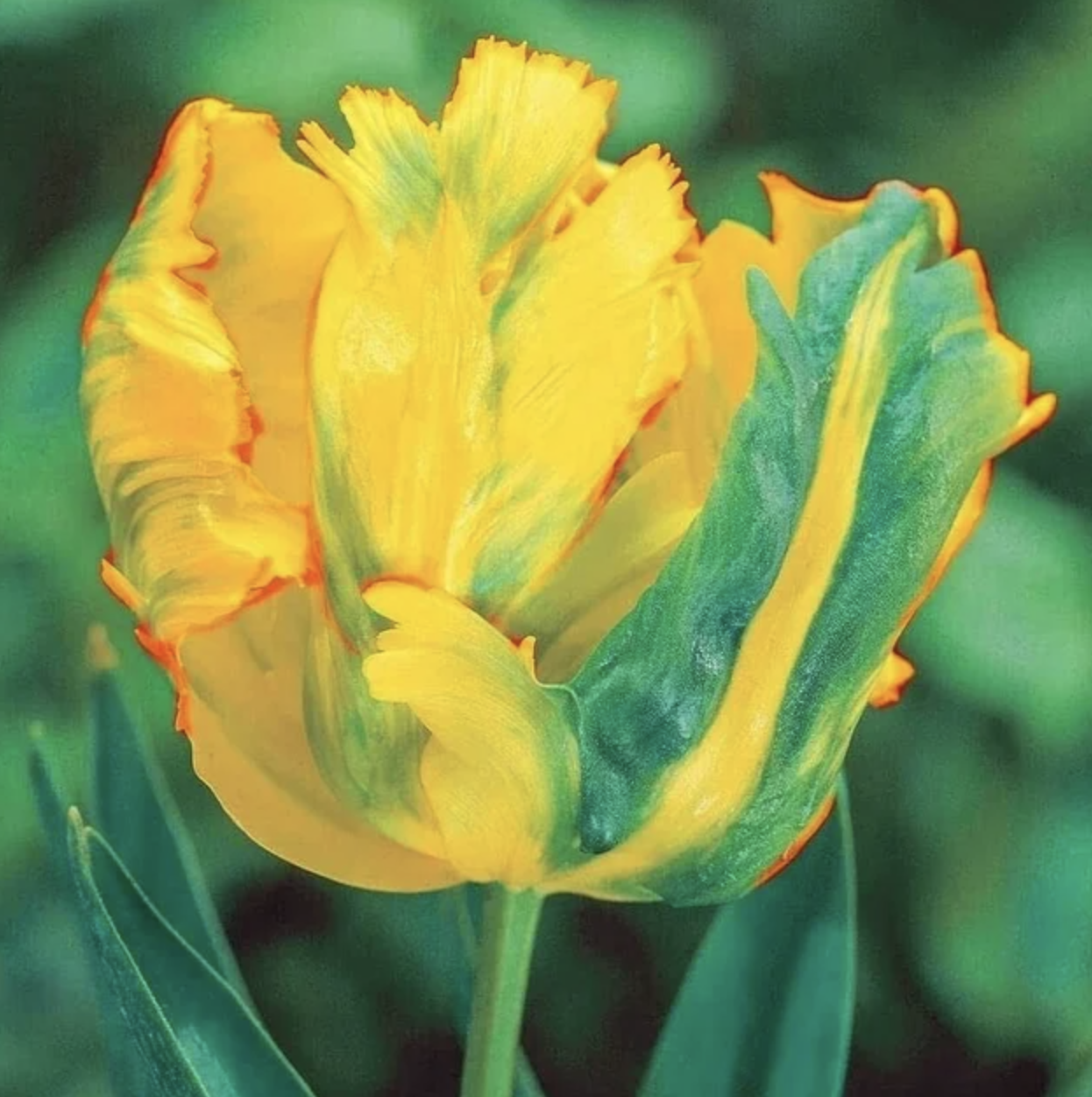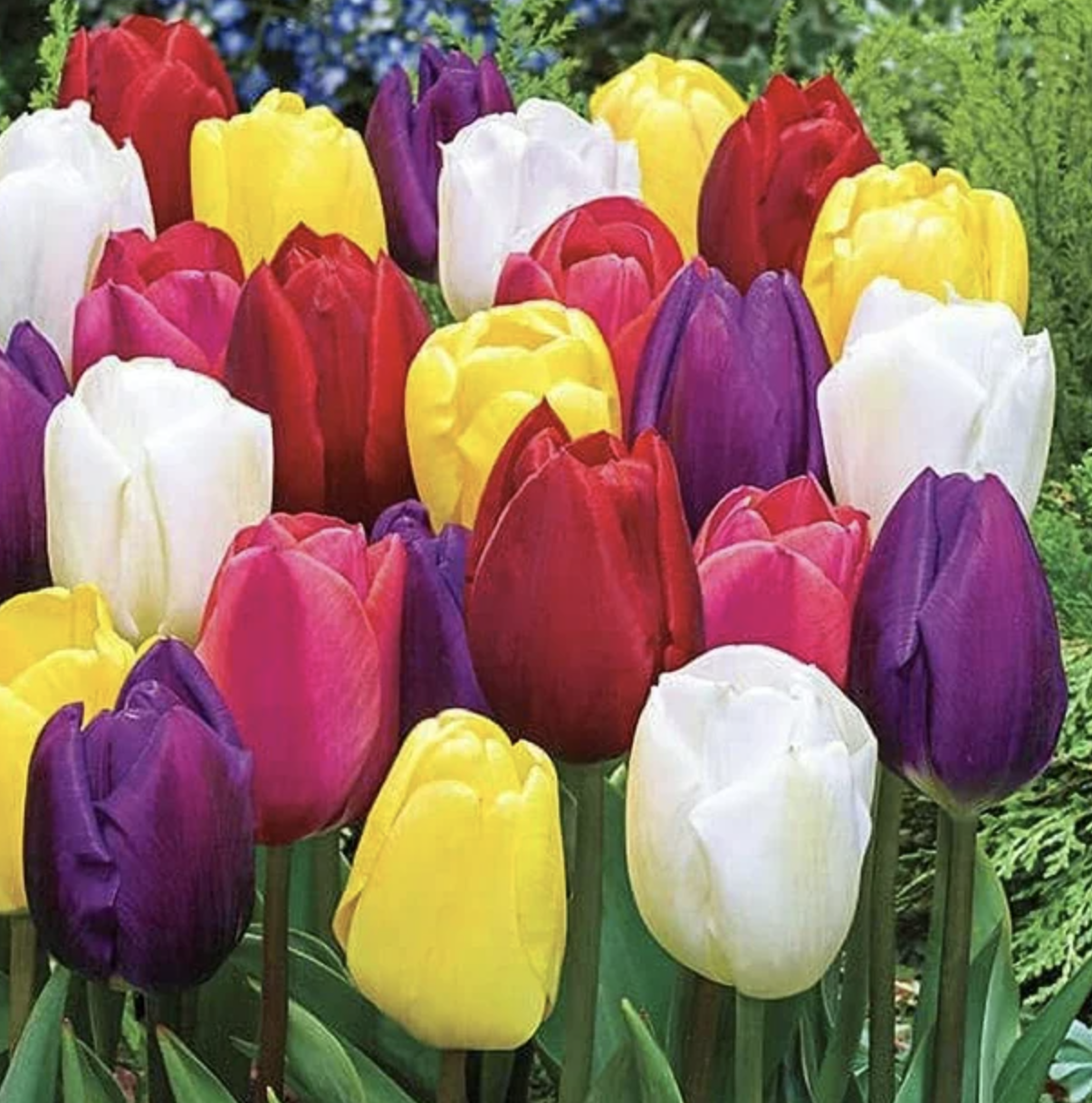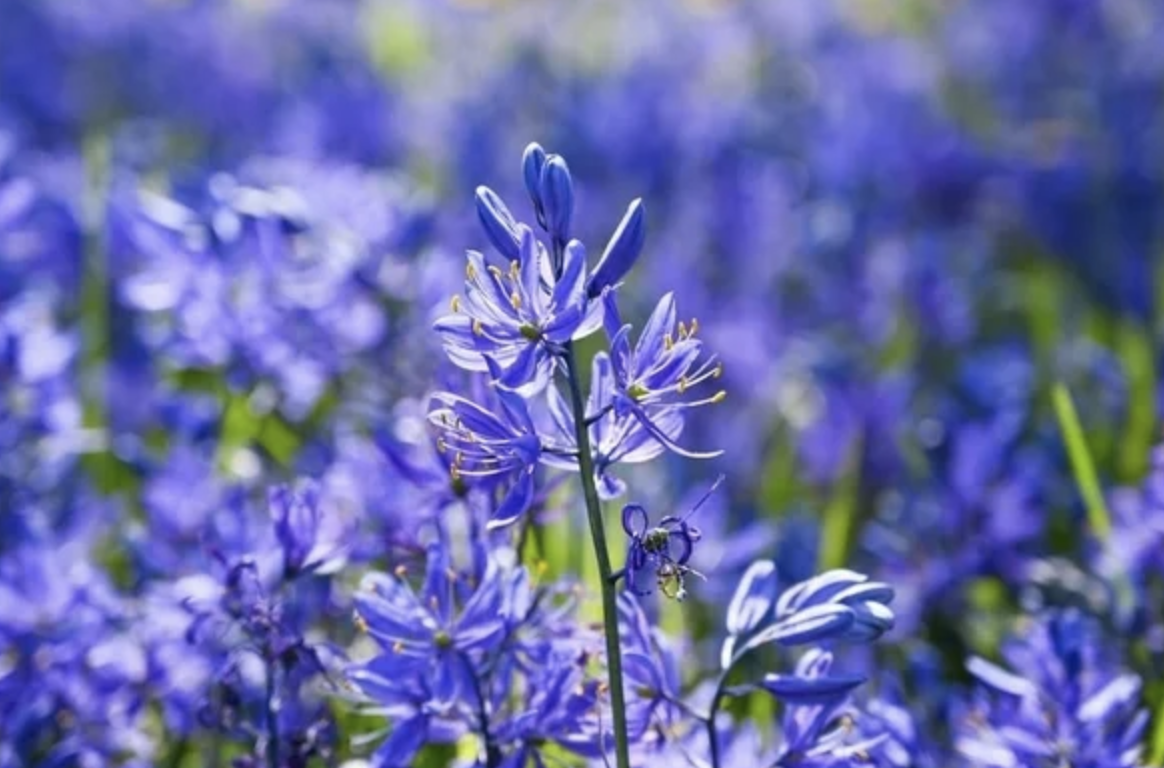The 7 Best Spring Bulbs for Cut Flowers —"You'll Fill Your Vases for Weeks"
Being able to cut your own spring flowers brings such joy. Our flower experts share their top choices for what to grow
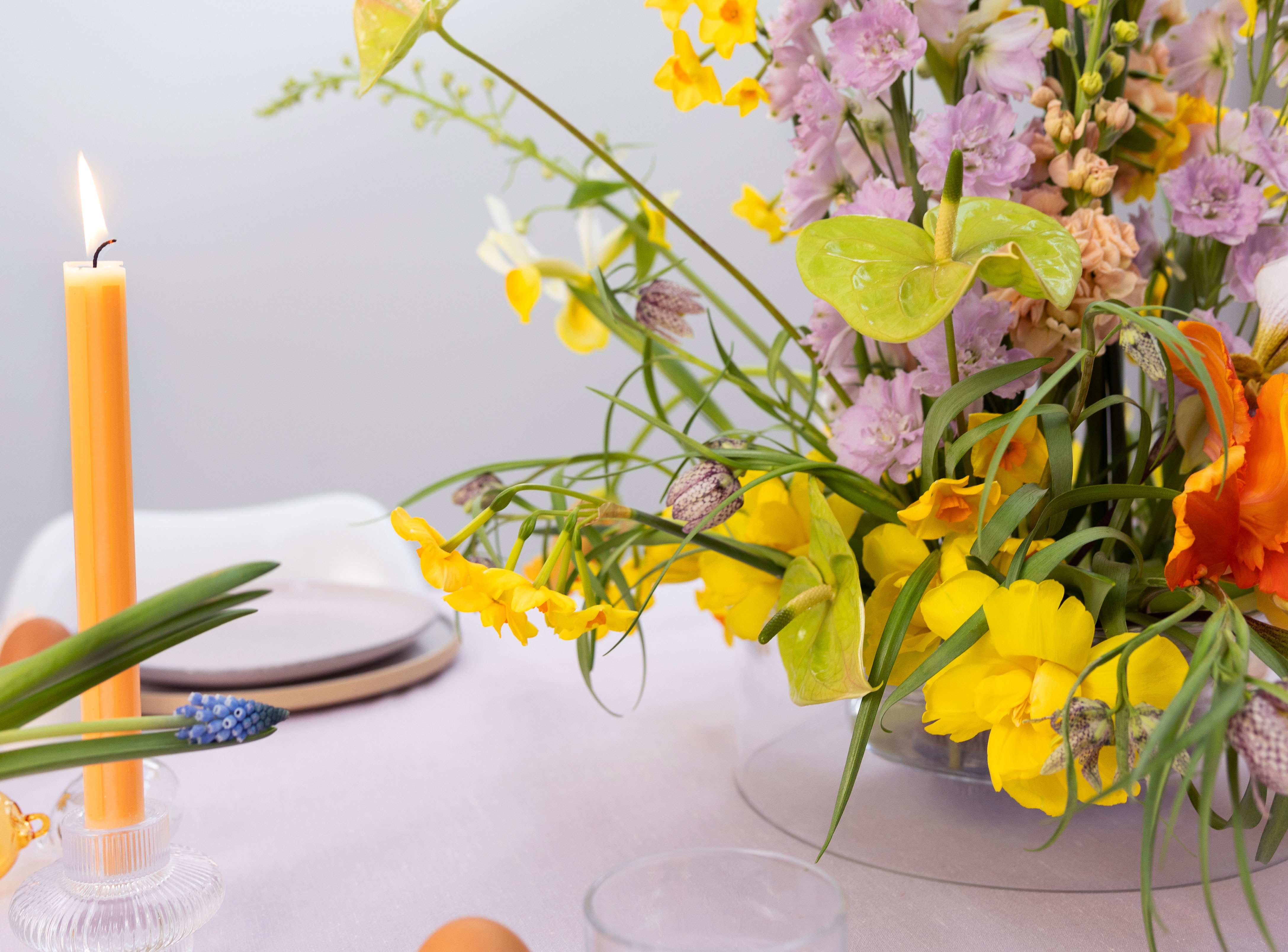
Your backyard isn't the only place for showcasing spring flowers. Bringing the outdoors in with loosely structured and naturalistic-looking arrangements of spring flowers is a big trend right now, especially when paired with the twiggy stems of forced leaves and other flowering branches. The joy of these displays is that they are so easy to do and anything goes. Floppy flowers? No problem, it's part of the look.
Simple spring blooms are the best flowers for cut floral arrangements, giving you the opportunity to display a small selection of stems and branches in individual bud vases, Mason jars, test tubes or whatever else works for you so every flower gets their chance in the spotlight. Alternatively if you only have one spring flower variety to hand they will always look good as a solo act, crammed into an interesting ceramic jug or vintage vase.
Our expert choice of the best spring bulbs for cut flowers showcases easy to grow varieties with long stems that you can arrange individually or artfully in a mix-up as you prefer. There's a long growing window that goes from spring right into early summer too. Now browse our selection to find inspiration for your own spring flower displays.
1. Tulips
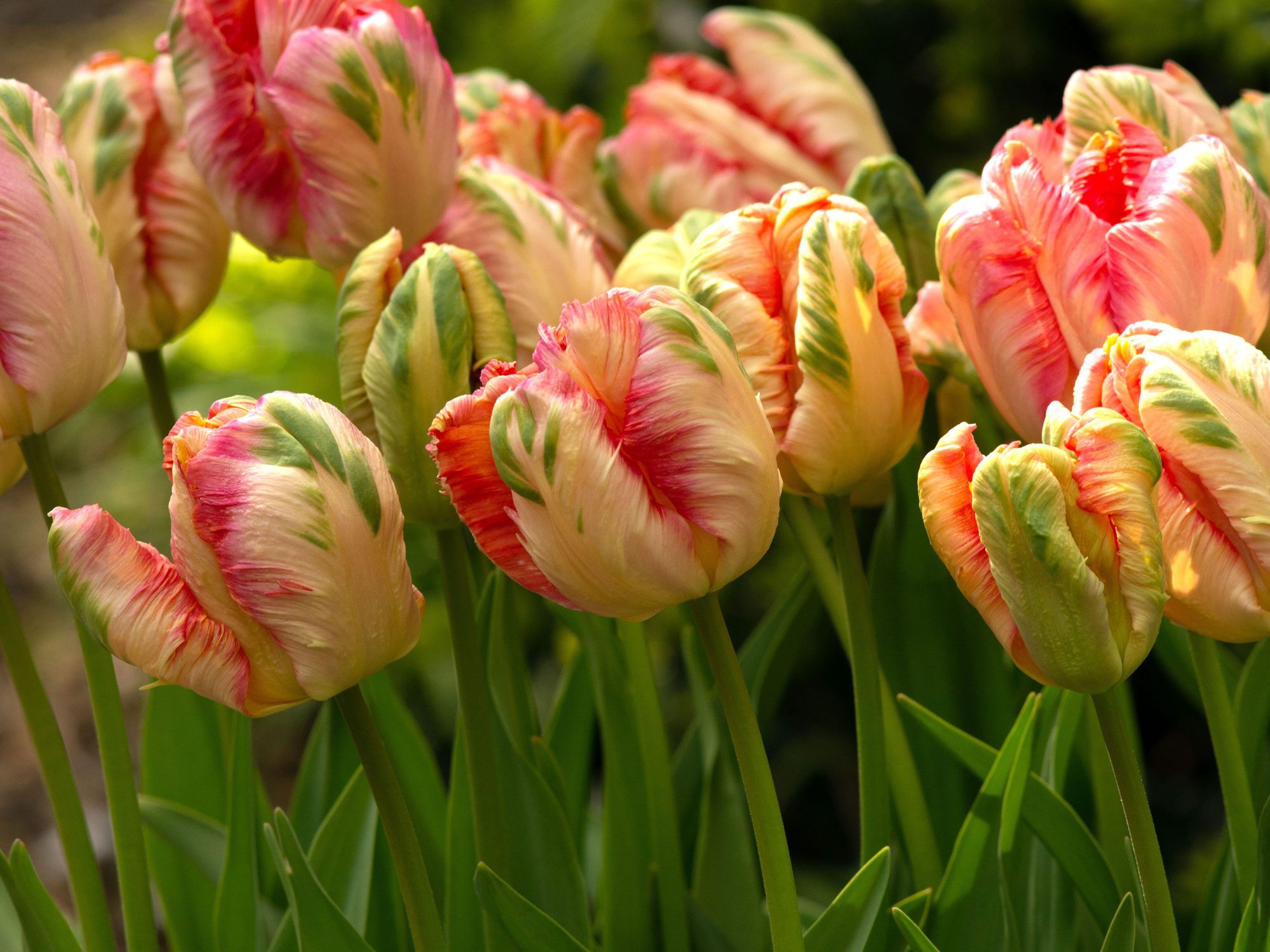
Tulip 'Apricot Parrot'
Tulips are a mainstay if you love the idea of a spring cutting garden. You can choose varieties with different flowering times to ensure a succession of blooms that will take you from the beginning of April until the end of May. This means you can keep vases filled with cut flowers for weeks. Our guide for how to take care of tulips in a vase will help.
'There’s nothing quite like tulips in the spring. After the long dreary months of winter, they are a healing balm to the soul and a delight to behold,' says Lori Hernandez of Three Acre Farm in Michigan, which specialises in seasonal blooms. 'Parrot tulips are fascinatingly beautiful. I love the contrasting colors on these "Apricot Parrot" ones, which are a mid to late blooming variety. They look decadent and luxurious. Many people have never seen tulips like these before.'
When choosing varieties for cutting, think about the different colors and shapes you might want for the type of arrangement you favor, and choose cultivars that work for you. This means doing a little research instead of heading to the garden center and picking up a sack of whatever bulbs are on offer.
Instead choose a mix of early and late flowering varieties to see you through the spring season. Plant as late as November or December for flowers the following year. You can also choose from a huge range of perennial varieties that are availalbe if you don't like the idea of lifting tulip bulbs every year.
2. Anemone
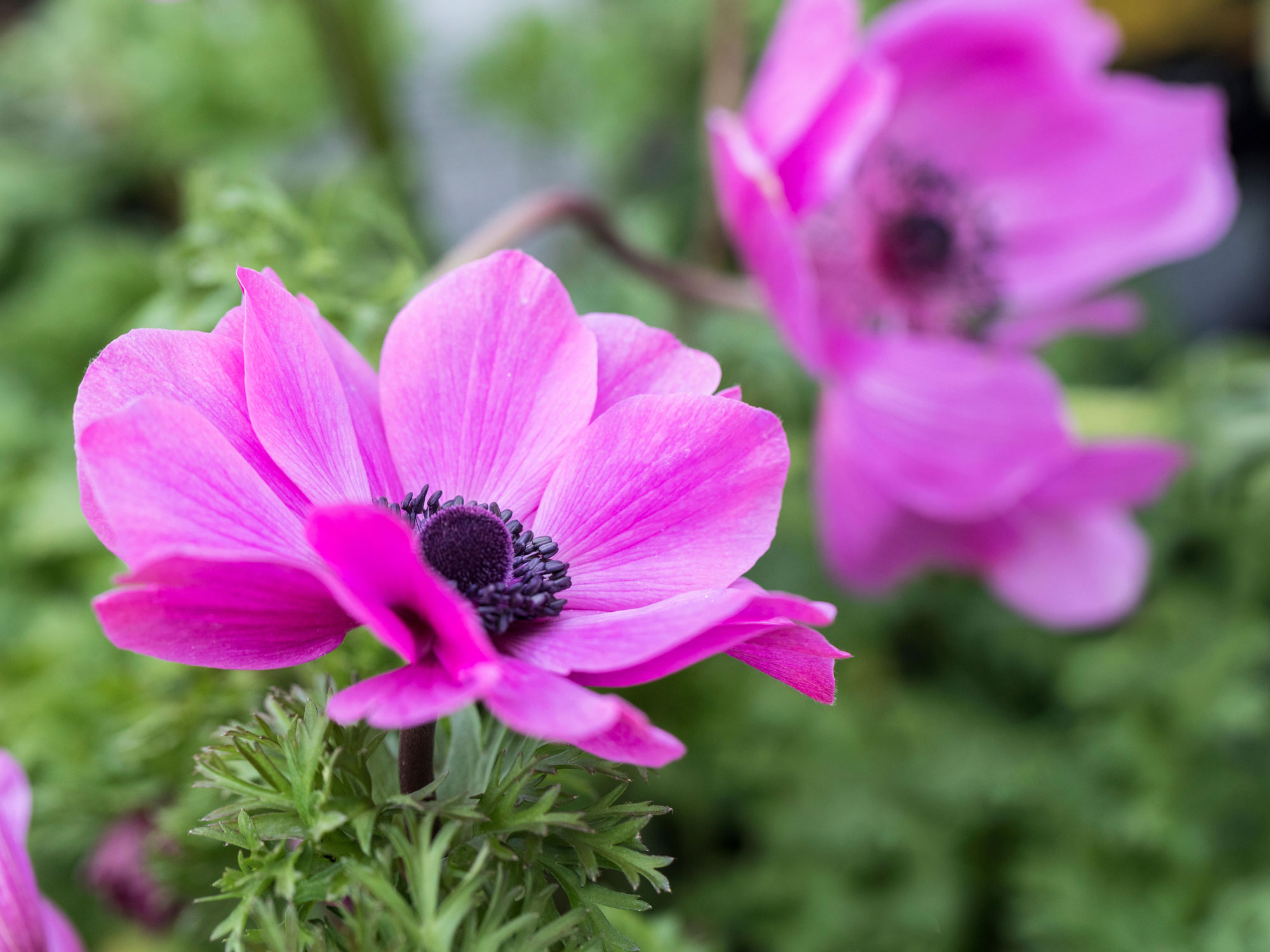
Anemone coronaria 'Harmony Orchid'
Anemones are such beautiful flowers it's always a surprise to discover they grow from ugly knobbly corms. This pack of ten is just $24.95 on Amazon. Known as cut-and-come-again flowers, they yield multiple blooms per stem over a period of four to six weeks. They are planted in September for flowering in the following spring.
You can also plant them in pots kept all winter for blooms as early as February, as long as you keep them under cover. It is good practice to lift and divide the corms every two years to keep them flowering.
The best anemones for cutting and arranging are the Anemone coronaria varieties, also known as windflowers. They come in single and double forms, and a mix of jewel-bright colors like deep pink, purple, and crimson, as well as white.
'They have to be cut when in bud and immediately put into a vase,' says internationally acclaimed garden designer Jacqueline van der Kloet, who has worked with Piet Oudolf at New York's Battery Park, New York Botanical Garden, and Chicago's Lurie Garden. 'Give them cold water but not too much or else the stems will break. Regularly check that they have enough water. It's best to put them somewhere out of direct sunlight. Add a dash of vinegar to the water to make the flowers last longer.'
Jacqueline's latest book Growing Bulbs in the Natural Garden can be found here on Amazon, and is packed with inspiration for the spring garden.
3. Ranunculus
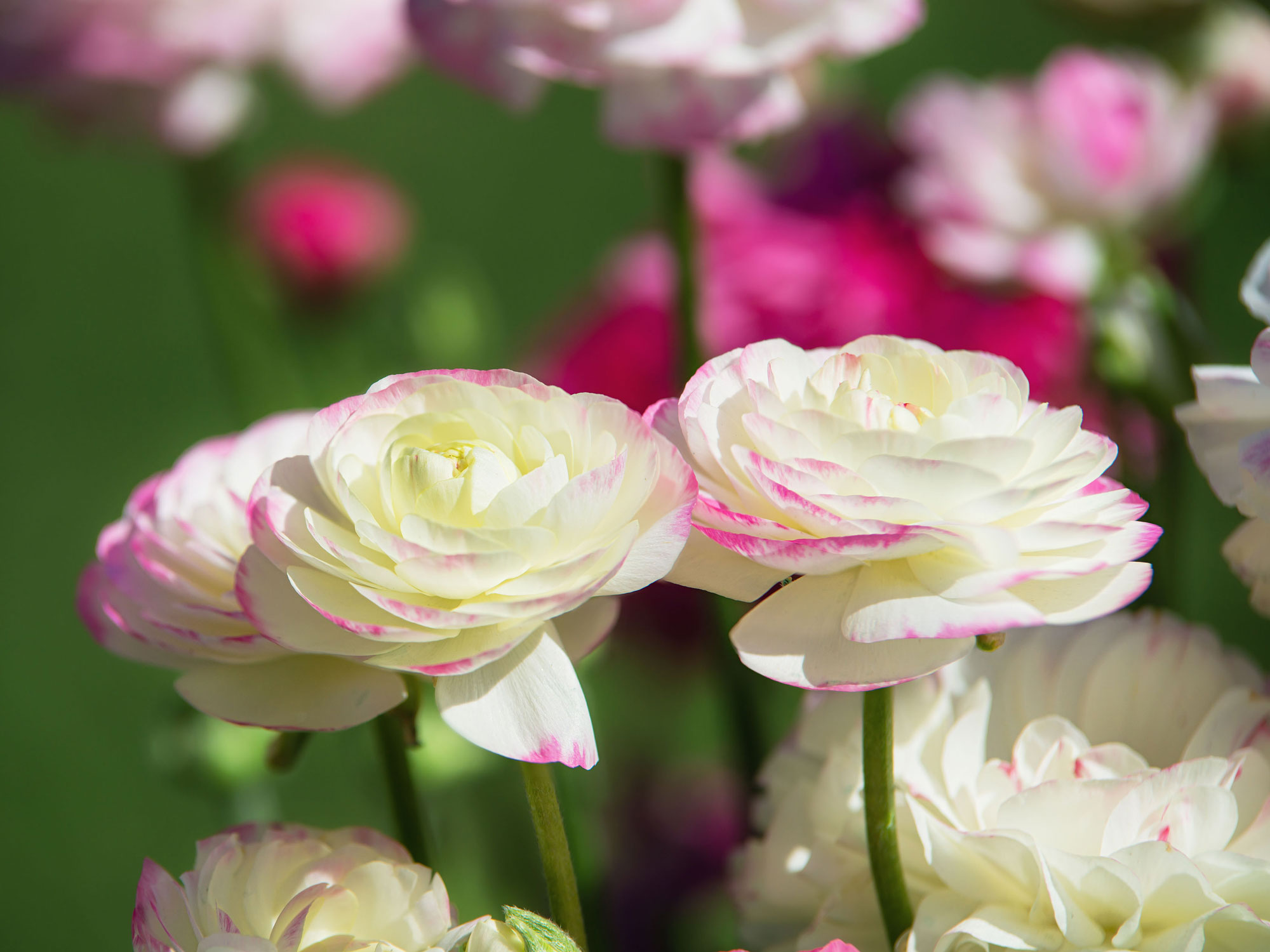
Ranunculus are spring-to-summer blooming perennials with mounds of ruffled, deeply lobed green foliage that look fabulous arranged indoors in opulent displays. They have endless amounts of silky petals that are tightly packed into the buds and it takes several weeks for them to fully open. You can also find out how to grow ranunculus indoors here.
There's a huge selection of cultivars to choose from. 'Be careful not to purchase dwarf varieties, as the stem length will not be long enough for cut flower use,' says says Jenny Marks, who runs the Trade Marks Flower Farm in the Finger Lakes Region of New York State. 'The 'Labelle' and 'Amandine' series are perhaps best for beginners, as they are affordable and fairly easy to grow. The Italian-type ranunculus ('Elegance' and 'Cloni') are much more expensive.'
If you stagger planting the small corms known as 'claws' you will be able to keep the flower display going for weeks. Also known as Persian buttercups, they're easy to grow and you will get multiple flowers from just one plant, so they're one of the best spring bulbs for cut flowers. They can be planted from October right round to March, for flowers from late spring to midsummer.
4. Narcissus 'Cheerfulness'
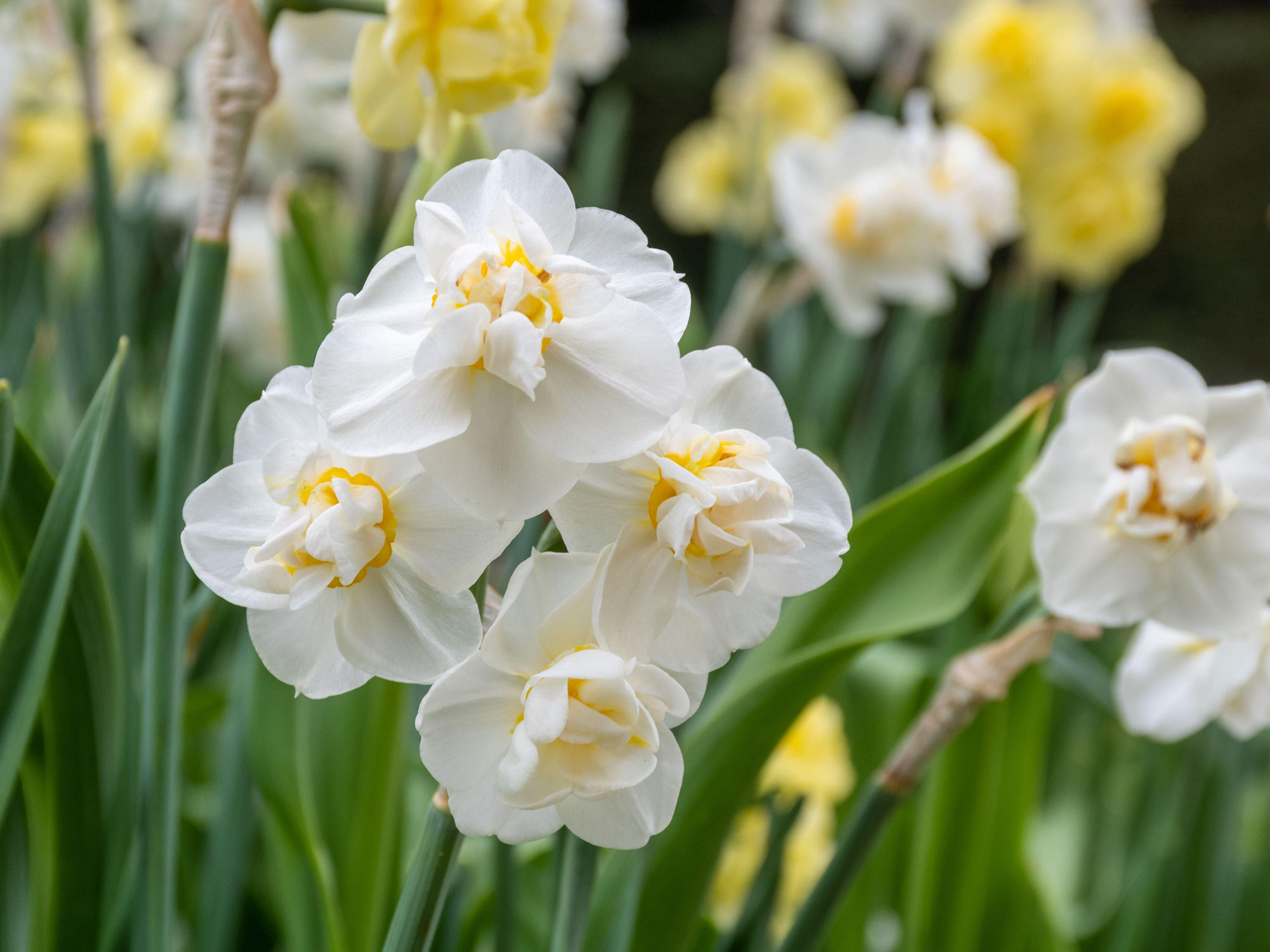
Narcissus 'Cheerfulness'
This cultivar - also known as daffodils - are those highly fragrant long-stemmed narcissi with clusters of beautiful gardenia-type double flower heads in a lovely shade of cream, and up to six blooms per stem. 'Cheerfulness' is one of the very few really sweetly scented narcissi you can buy, and it grows up to 16 inches tall, which makes it perfect for arranging in vases.
Flowering from March-April, with careful cultivar choice you can have a series of narcissus in flower from early through late spring. 'My preference is for the more modest varieties, with smaller flowers in subdued colors such as white, creamy white or pale yellow,' says Jacqueline van der Kloet. 'They fit in anywhere but are really needed to add that early touch of spring.'
To prepare narcissi for vase life, cut the stem straight across as opposed to the usual 45° angle. Arrange the flowers in shallow water to prevent the soft stems from decaying more quickly. Our guide for how to take care of daffodils in a vase will help you.
5. Hyacinth
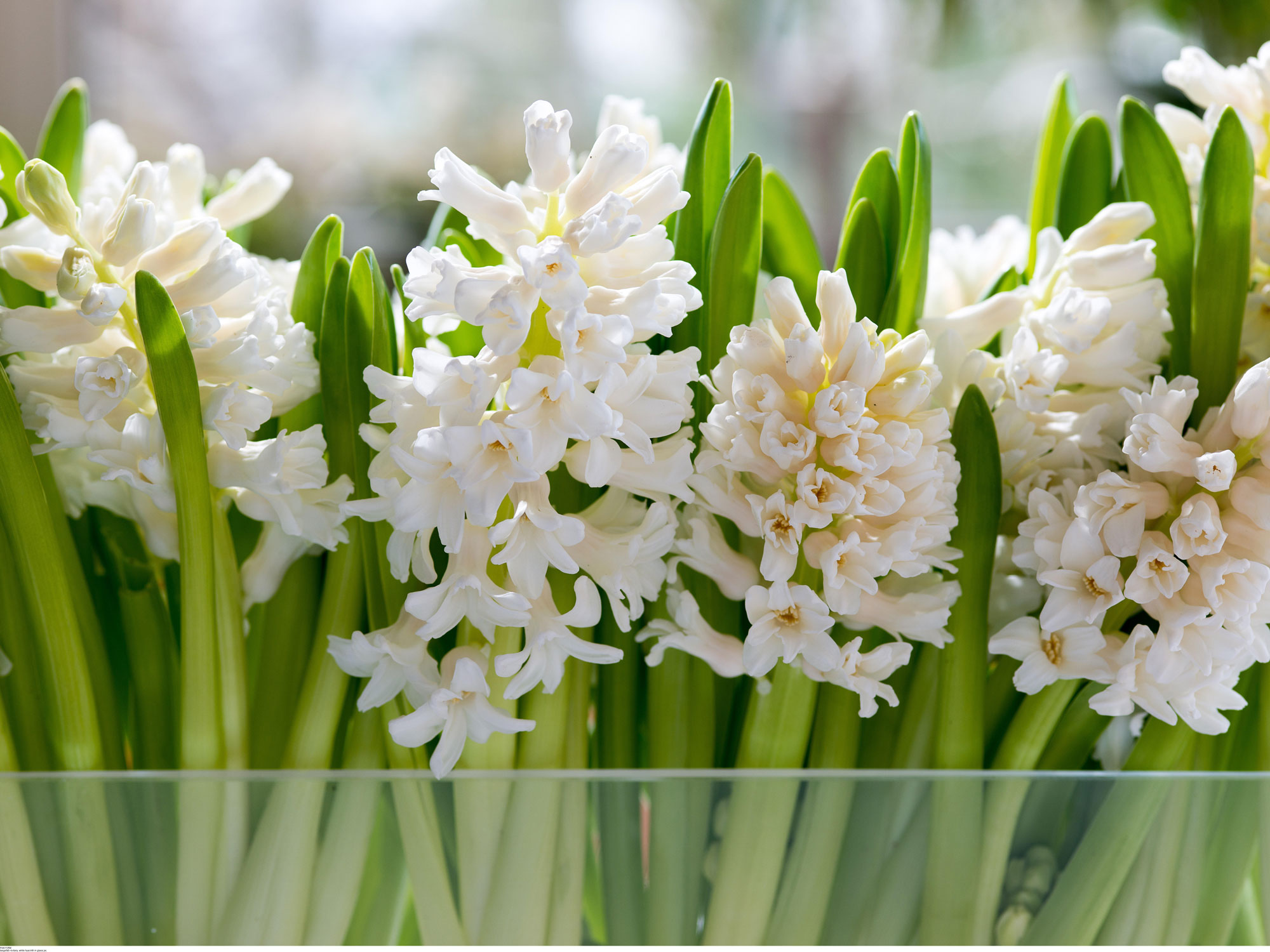
Hyacinths are one of the best spring bulbs for cut flowers with their delicious wafting fragrance and gorgeous range of colors. They're also pretty affordable, as this $26.95 selection from Walmart shows. There is a particular way of cutting hyacinths that's good to know if you want to get the best results in a vase. 'When using hyacinths as cut flowers it's important to pull the entire plant including the bulb,' says Penn State master gardener Danielle Keeton of North Lawn Flower Farm.
'As a gardener this might feel counter productive but this is the right way to do it to get cut flowers. Once you've pulled the plant make four cuts into the bulb, a north, south, east and west cut, most importantly leaving the middle portion of the bulb intact.' Danielle recommends always using gloves when working with hyacinth bulbs as they can be a skin irritant.
Cutting hyacinths in this way means you get a much long stem length, a good three or four inches more for a better looking arrangement in the vase. Plus of course your cut hyacinths will last much longer, generally from 10-14 days instead of just a few.
6. Allium
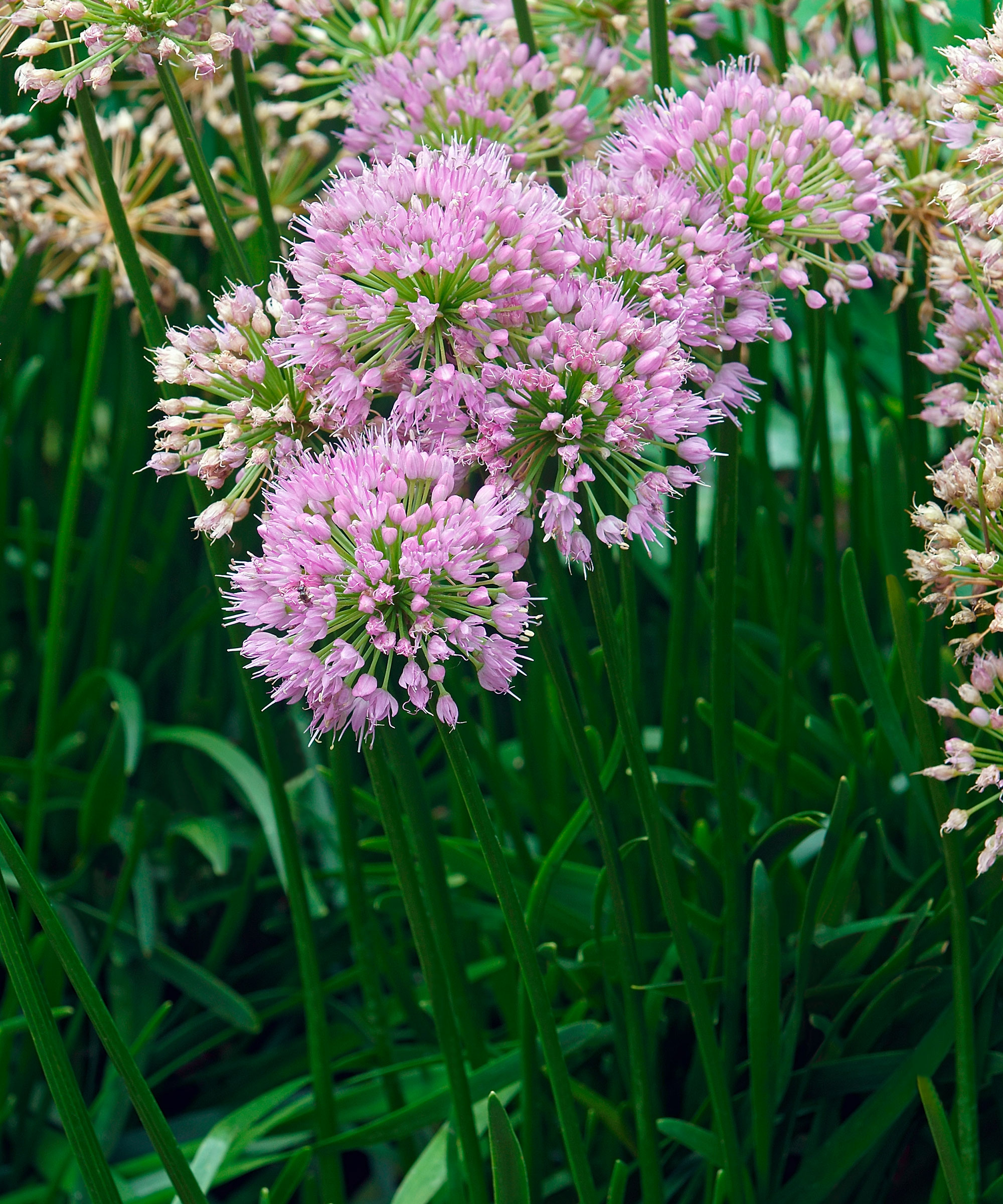
'Millennium' allium
Alliums are one of the best spring bulbs for cut flowers as they offer a huge amount of gorgeousness in return for the smallest amount of effort. Simply put the bulbs in the ground and they magically return spring after spring, with plenty of flowers to snip for vase displays.
'The sparkler heads of alliums look so glam in a vase,' says leading UK plant expert Sarah Raven. 'They will look good for up to 2 weeks without rearranging. To minimise the oniony smell, change the water regularly or add a splash of vinegar to the water. They also look fantastic dried so it’s worth collecting every flower head.'
Alliums have stiff stems that make them easy to arrange, and the flowers are very long lasting. Planting plenty of alliums in a cutting garden will ensure you always have a good supply of flowers for the vase. Choosing several different types will give you flowers throughout the season too. Good options for indoor arrangements include 'Purple Sensation', 'Millennium', and 'Serendipity'.
7. Camassia
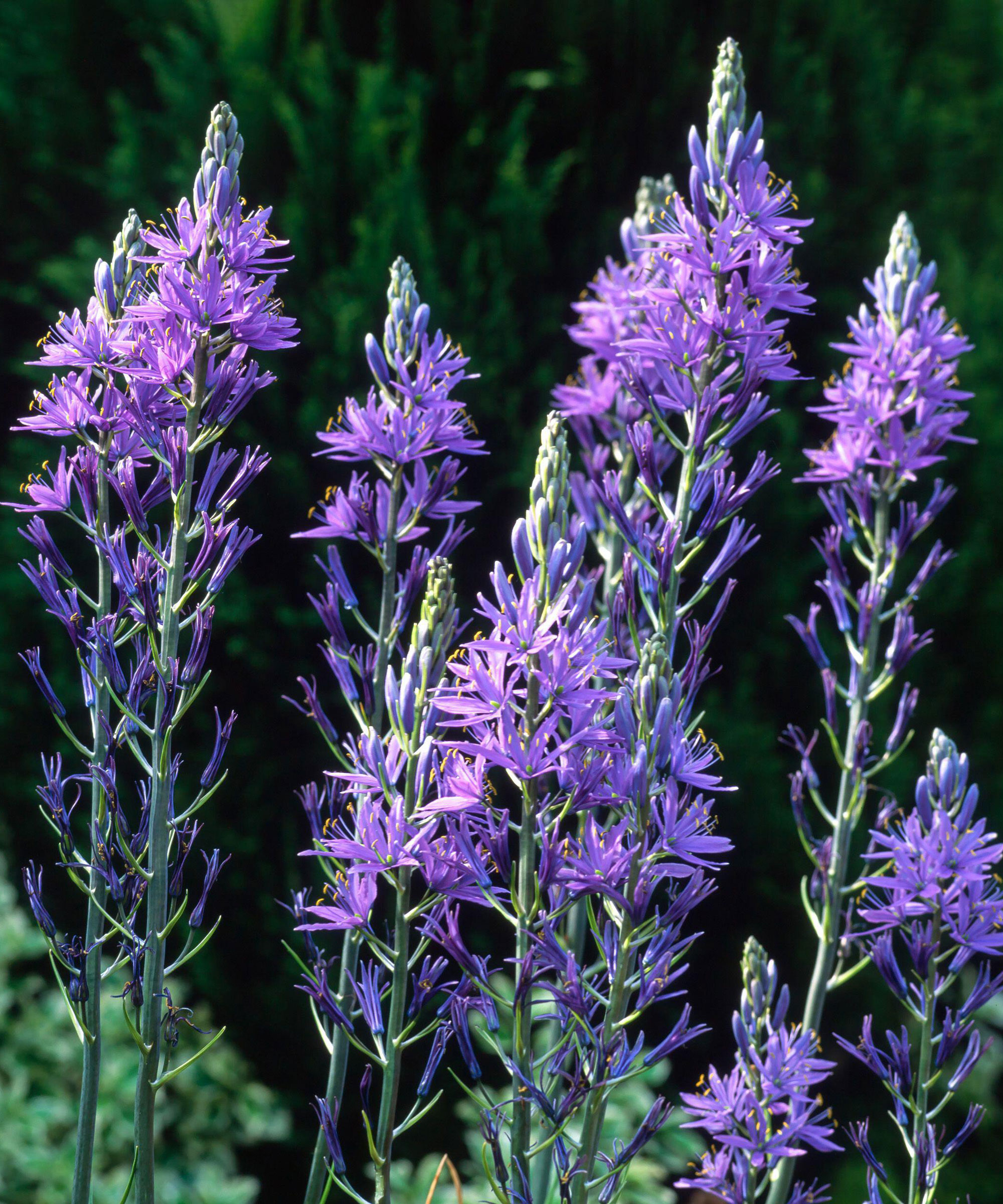
Camassia leichtlinii 'Caerulea'
Mostly native to western North America, Camassia (also known as wild hyacinth) bloom in late spring, after the daffodils and just before peonies and other early summer perennials. Once planted, they bloom for many years, and will gradually multiply to form good-sized clumps.
'The beautiful spikes of blue, pink or white star-like flowers are an excellent addition to a late spring garden,' says flower expert Jenny Rose Carey. 'Easy to grow from a fall-planted bulb, they are perfectly at home in a flowerbed planted with columbine, tulips and allium.'
You can count on them for a good supply of cut flowers for the home. Cutting the stems does not harm the plant either. For best results, condition the flowers overnight in cool water before arranging them.
We think that a selection of tulips, alliums and camassia is one of the prettiest spring flower combinations you'll find.
Be The First To Know
The Livingetc newsletters are your inside source for what’s shaping interiors now - and what’s next. Discover trend forecasts, smart style ideas, and curated shopping inspiration that brings design to life. Subscribe today and stay ahead of the curve.
Lifestyle journalist Sarah Wilson writes about flowers, plants, garden design and trends. She has studied introductory garden and landscape design and floristry, and also has an RHS Level 2 qualification in the Principles of Plant Growth and Development. In addition to homesandgardens.com and livingetc.com she's written for gardeningetc.com, Real Homes, Modern Gardens and Country Homes & Interiors magazines. Her first job was at Elle magazine, during which time a trip to the beautiful La Colombe d'Or in St-Paul-de-Vence led to an interest in writing about all things botanical. Later as lifestyle editor at Country Homes & Interiors magazine the real pull was the run of captivating country gardens that were featured.
-
 5 Bathroom Layouts That Look Dated in 2025 — Plus the Alternatives Designers Use Instead for a More Contemporary Space
5 Bathroom Layouts That Look Dated in 2025 — Plus the Alternatives Designers Use Instead for a More Contemporary SpaceFor a bathroom that feels in line with the times, avoid these layouts and be more intentional with the placement and positioning of your features and fixtures
By Lilith Hudson Published
-
 Why Decorating With Mustard Yellow Helps Fill Your Interiors With a Sense of "Confident Calm"
Why Decorating With Mustard Yellow Helps Fill Your Interiors With a Sense of "Confident Calm"There is so much more to decorating with this turmeric-tinted sauce-wiggled-on-a-hotdog not-quite-yellow shade than meets the eye
By Amy Moorea Wong Published
